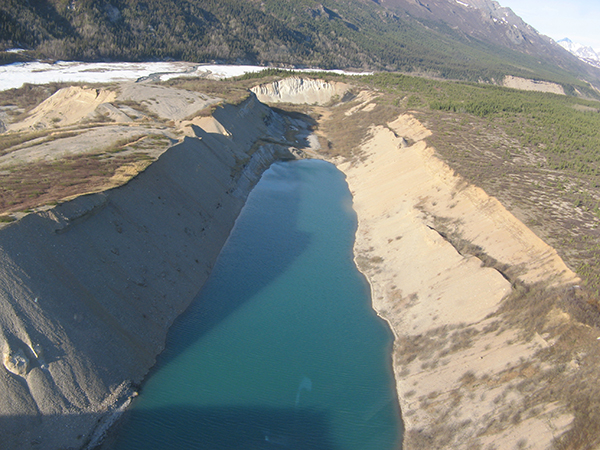Abandoned Mine Lands
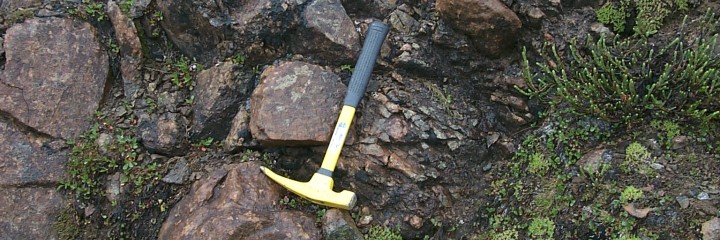
Introduction

The federal Surface Mining Control and Reclamation Act was signed into law on August 3,1977 to regulate surface coal mining and reclamation nationwide. The law provided states the opportunity to develop state coal programs and assume primacy over the coal program from the federal government. Alaska chose to administer the program and the Alaska Surface Coal Mining Control and Reclamation Act was approved on May 2,1983 with the Commissioner of the Department of Natural Resources being granted jurisdiction over surface coal mining and reclamation operations in the state.
In addition to regulating the coal industry, State and federal laws created the Abandoned Mine Lands Program for the purpose of reclaiming abandoned historic mines of any type. Land and water eligible for reclamation are those that were mined or affected by mining and abandoned or left in an inadequate reclamation status before August 3, 1977, and for which there is no continuing reclamation responsibility under State or federal law. Abandoned Mine Lands (AML) funds can be spent on coal and non-coal abandoned historic mines. State, private, native and federal lands are eligible. The fee collection that provides the funds which the federal government distributes to the various states and tribal entities has been extended by Congress until September 30, 2022. There are no State General Fund dollars used in the AML Program.
Funding Source and Levels
The AML Program is funded 100 percent by the AML Trust Fund administered by the federal Office of Surface Mining Reclamation and Enforcement (OSMRE). AML funds are collected from a fee assessed on today's coal industry for every ton of coal produced and used to correct past deficiencies on now-defunct mine sites. The fee is 28.0 cents/ton for surface mines and 12.0 cents/ton for underground mines.
Alaska is considered a Minimum Program state and has been funded at the Minimum Program level since 1994. The grant amount for Minimum Program states is currently set at $3 million annually. These funding levels will remain constant until 2022, although it is important to note that AML’s annual grants are subject to federal sequestration.
Inventory and Accomplishments
Alaska’s coal and non-coal abandoned historic mines were broadly inventoried in 1983 and 340 sites were identified. Coal mining in Alaska has been well documented and every mine of significance has been identified. At present, the AML Program is working to refine the inventory to identify specific features and plan for mitigating each site. A literature search of known non-coal mines was compiled in 1991 and 432 sites were identified. The non-coal inventory remains incomplete for state, private and native lands.
Every inventoried site was evaluated to determine if it qualified for AML funding. Federal policy requires that priority one and two coal projects (the most likely to cause death or severe injury to site visitors) be completed first. Priority three coal projects (environmental issues) can be completed in conjunction with priority one and two projects or after all priority one and two projects have been completed. Only priority one non-coal projects can be reclaimed. Priority one non-coal sites can be worked on simultaneously with coal sites if they have been requested by the Governor. Because of the subjective nature of the criteria, priority two non-coal sites were identified for further evaluation. The three reclamation priorities are:
1. Protection of public health, safety, general welfare and property from extreme danger resulting from the adverse effects of past coal mining practices.
2. Protection of public health, safety and general welfare from adverse effects of past coal mining practices, which do not constitute an extreme danger.

3. Restoration of eligible lands and waters and the environment previously degraded by adverse effects of past coal mining practices, including measures for the conservation and development for soil, water (excluding channelization), woodland, fish and wildlife, recreation resources, and agricultural productivity.
AML Inventory as of May 1st, 2014
| Coal Projects | Non-Coal Projects | |||||
|---|---|---|---|---|---|---|
| Region | Priority 1 | Priority 2 | Priority 3 | Priority 1 | Priority 2 | Priority 3 |
| Arctic | 0 | 0 | 0 | 0 | 0 | 0 |
| Interior | 5 | 1 | 0 | 1 | 0 | 0 |
| Northwest | 0 | 0 | 0 | 0 | 0 | 0 |
| South Central | 2 | 2 | 2 | 7 | 0 | 0 |
| South East | 0 | 0 | 0 | 0 | 0 | 0 |
| South West | 0 | 0 | 3 | 0 | 0 | 0 |
| Subtotal | 7 | 3 | 5 | 8 | 0 | 0 |
| Total by Source | 15 | 8 | ||||
Utilizing these general priorities, it was determined that there are at least 15 very large coal project areas and 8 known non-coal projects that still need to be reclaimed (Figure 1).
In the initial inventories it was estimated that reclamation of the coal projects would cost $54,219,000 and the non-coal would cost $239,000. To date 88 AML projects have been completed at a cost of $23.77 million (see link below). In some cases a site contains a single mining hazard and in other cases a multitude of mining hazards exists on a single site. The majority of the remaining coal related hazards are dangerous highwalls (19,750 feet) and surface burning (10 acres). The majority of non-coal hazards are open portals (10) and vertical openings (19).
The goals of the AML Program will be to complete as many coal and non-coal projects as funding will allow. We will be using periods of time when most funds are committed to single large projects to define and design mitigation plans for the remaining features requiring work in order to have the projects “on the shelf” as funds become available. Funding available for non-coal projects is limited to specific funding sources within the AML grants. Alaska’s AML Program has a stated focus on mitigating legacy coal issues.
It is apparent that all of the sites requiring reclamation cannot be completed before the AML Fund ceases to be available. The Division of Mining, Land and Water will continue to re-evaluate the inventories and concentrate on the highest priority coal and non-coal projects that have been identified. The AML Program will attempt to find other sources of funding such as shared cost projects with the mining industry and leveraging project participation by the various federal land management agencies.
Tabular data on AML Accomplishments PDFAML Future Projects
Healy Creek Strip Pits
From the 1920s through the 1960s large scale surface coal mining occurred in Healy Valley, Alaska, along the south side of Healy Creek. After the economical coal was mined out, the strip pits were abandoned without being reclaimed. This left behind well over 300 acres of disturbed lands in seven individual pits, comprising a series of dangerous highwalls, steep footwalls, and out-of-pit spoil piles. The AML Program will be reclaiming this area for the next nine years.
Hydraulic Pit (Reclamation Spring 2016)
The Hydraulic Pit has dangerous highwalls and severe erosion issues from wind and water. The south and east walls are more than 300 feet high. A 600 foot long portion of the north wall is nearly vertical and over 200 feet high. A significant amount of water flows through the pit, creating large amounts of erosion and re-deposition of sediments.
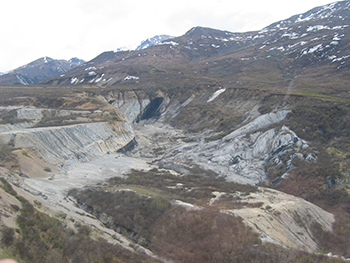
Bill Pit (Projected Reclamation 2016)
Bill Pit is approximately 2500 feet long, bordered by a highwall 120-140 feet high along most of its northern length. There are also minor erosion issues from water discharge out of the northeast corner of the pit.

East Cripple Creek Pit (Projected Reclamation 2017 – 2019)
East Cripple Creek Pit is approximately 2/3 of a mile long and contains significant highwalls. Surface water flow is creating substantial erosion. A continuous, dangerous highwall borders the entire northern length of the pit, most of it at least 100 feet tall.
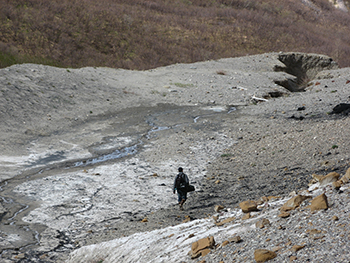
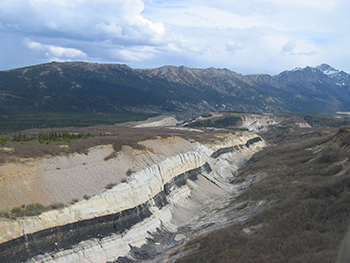
West Coal Creek Pit (Projected Reclamation 2020)
West Coal Creek Pit has roughly 1500 lineal feet of continuous highwall, 30-40 feet high and is surrounded by established vegetation.
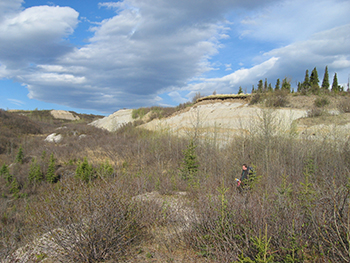
East Coal Creek Pit (Projected Reclamation 2021)
East Coal Creek Pit is stable and dry, with little evidence of active erosion other than mass wasting. Highwalls and footwalls composed of poorly cemented sandstone and loose gravel are exposed in the upper 20 feet of the pit walls, however vegetation surrounding the pit rim is thick and dense.
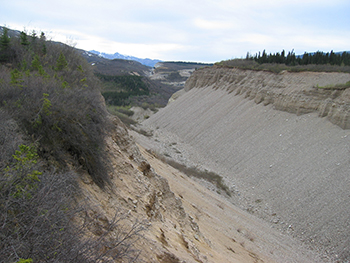
(Projected Reclamation 2022)
The Center Pit has sides approximately 100 feet high and turquoise blue water of unknown depth and quality impounding the entire length of its floor. The west end of the pit is steeper than 1:1.
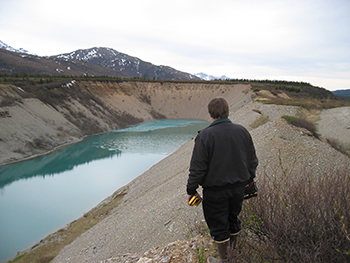
Apex Pit (Projected Reclamation 2023)
The Apex Pit is the furthest east of the Healy Creek Strip Pits. On the far eastern end of the pit is a section of highwall measuring approximately 100 feet long and rising 40 vertical feet.
